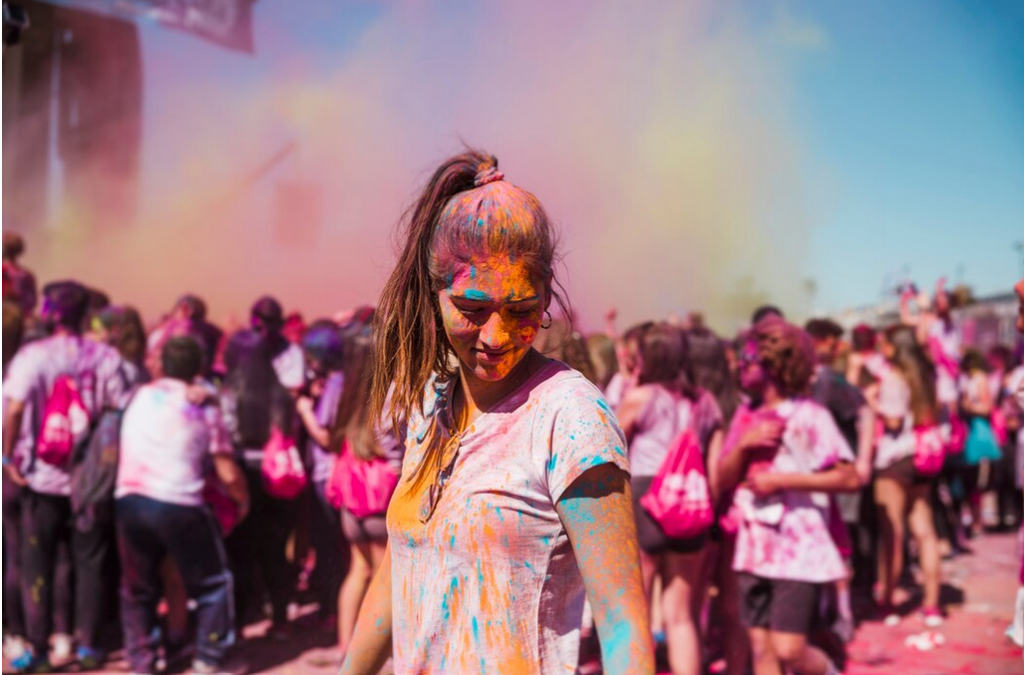Table of Contents

Introduction of Holi Festival:
Holi, which means “festival of colors,” is one of India’s most colorful and happy events. It means spring has come and that good has won over evil. In India, this holiday has deep roots in tradition and is very important to millions of people all over the country. This story talks about where Holi came from, its customs, and what it means, as well as why it is enjoyed with so much passion in India.
Where did Holi Come From ?
The history of Holi can be traced back to old Hindu stories. People think that the event came from a number of different stories, with the most well-known being the story of Holika and Prahlad. Hindu texts say that there was a demon king named Hiranyakashipu who was given the power to live forever. But his son Prahlad was a devoted follower of Lord Vishnu, which made Hiranyakashipu very angry. He tried many things to kill Prahlad, such as getting his sister Holika, who couldn’t be hurt by fire, to help him.
Although Holika tried to get Prahlad to sit on her lap in a bonfire, Prahlad’s unwavering faith in God kept him safe, while Holika died in the fire. This event shows that good won over evil, and during Holi, people light bonfires to remember the burning of Holika. This is called Holika Dahan.
The love story between Lord Krishna and Radha is another well-known Holi story. According to story, when Krishna was young, he was jealous of Radha’s fair skin and painted her face for fun. Drawing on Radha’s face as a joke has turned into the fun custom of using colors (gulal) during Holi.
Celebrations and long - Standing Customs of Holi:
In India, everyone celebrates Holi with a lot of energy and passion, and the fun usually lasts for two days. People gather around bonfires on the night before Holi to do rituals and pray to the gods. It is called Holika Dahan, and it represents the win of good over evil and light over darkness.
The real fun starts the next day, when people play in the streets with water guns, water balloons, and colored balls. There is music, laughter, and the smell of tasty holiday treats in the air. Everyone is included in Holi, and people of all ages, classes, and walks of life come together to enjoy the happy event.
The throwing of colored powders and water, which are called gulal and abir, is one of the most famous parts of Holi. These bright colors represent the variety of life and the start of spring. People paint each other, dance to traditional folk music, and eat sweet and spicy snacks that taste great.
Importance of the Holi Festival:
People of all religions and groups in India enjoy Holi with great enthusiasm. It has a huge cultural and social meaning there. People of all backgrounds are welcome at the event, which breaks down social barriers and brings people together in a mood of joy and friendship.
One of the main ideas behind Holi is that it’s important to forgive and let go of old grudges. You can fix failed relationships, work out your differences, and start over with a blank page. Not only is throwing colors a fun thing to do, but it’s also a way to let go of the past and welcome the future with open arms.
Holi is also a celebration of the beauty of nature and the cycle of rebirth and renewal. Spring is a time of growing flowers, lush grass, and fresh starts. It marks the end of winter and the start of spring. Everyone at the event should be happy about how much nature has given them and give thanks for it.
For Hindus, Holi is also holy because it is linked to many historical stories and customs. For people who worship Lord Krishna, Holi is a time to remember and celebrate how fun and naughty the god can be. In India, temples are decorated with bright flowers, and many people go there to ask the gods to bless them.
Conclusion:
Holi is a celebration of life, love, and harmony; it is much more than simply a festival of colors (also known as “color festival”). It brings people together in a spirit of joy and peace, transcending boundaries of religion, caste, and creed in the process. In addition to serving as a reminder of the everlasting principles of compassion, forgiveness, and rejuvenation, the festival is a manifestation of the abundant cultural history that India has.
Let us focus on Holi’s deeper meaning and meaningful messages while we celebrate. Let’s celebrate big but with respect and appreciation for life’s gifts and the links of friendship and community that bind us. Happy Holi!